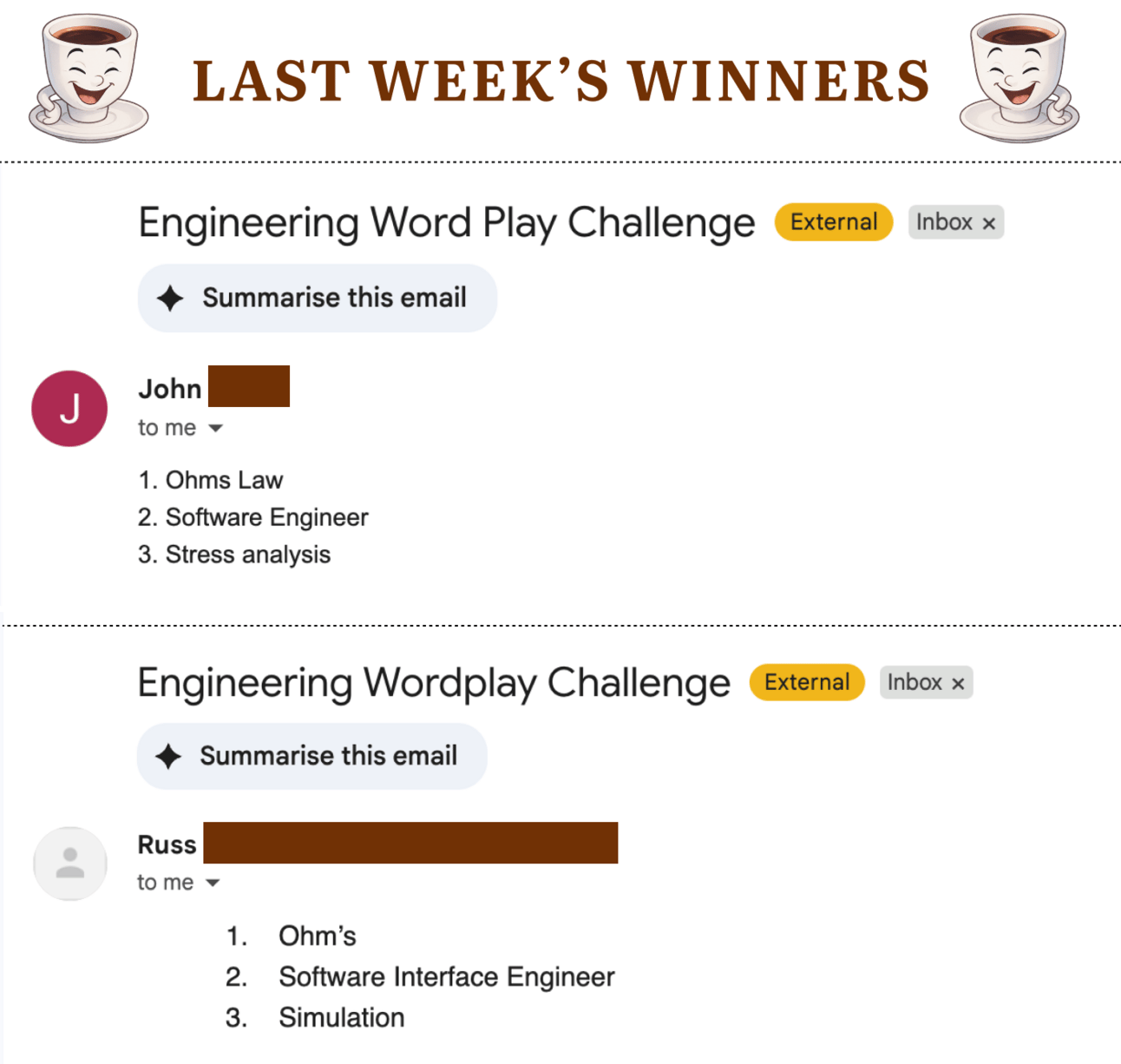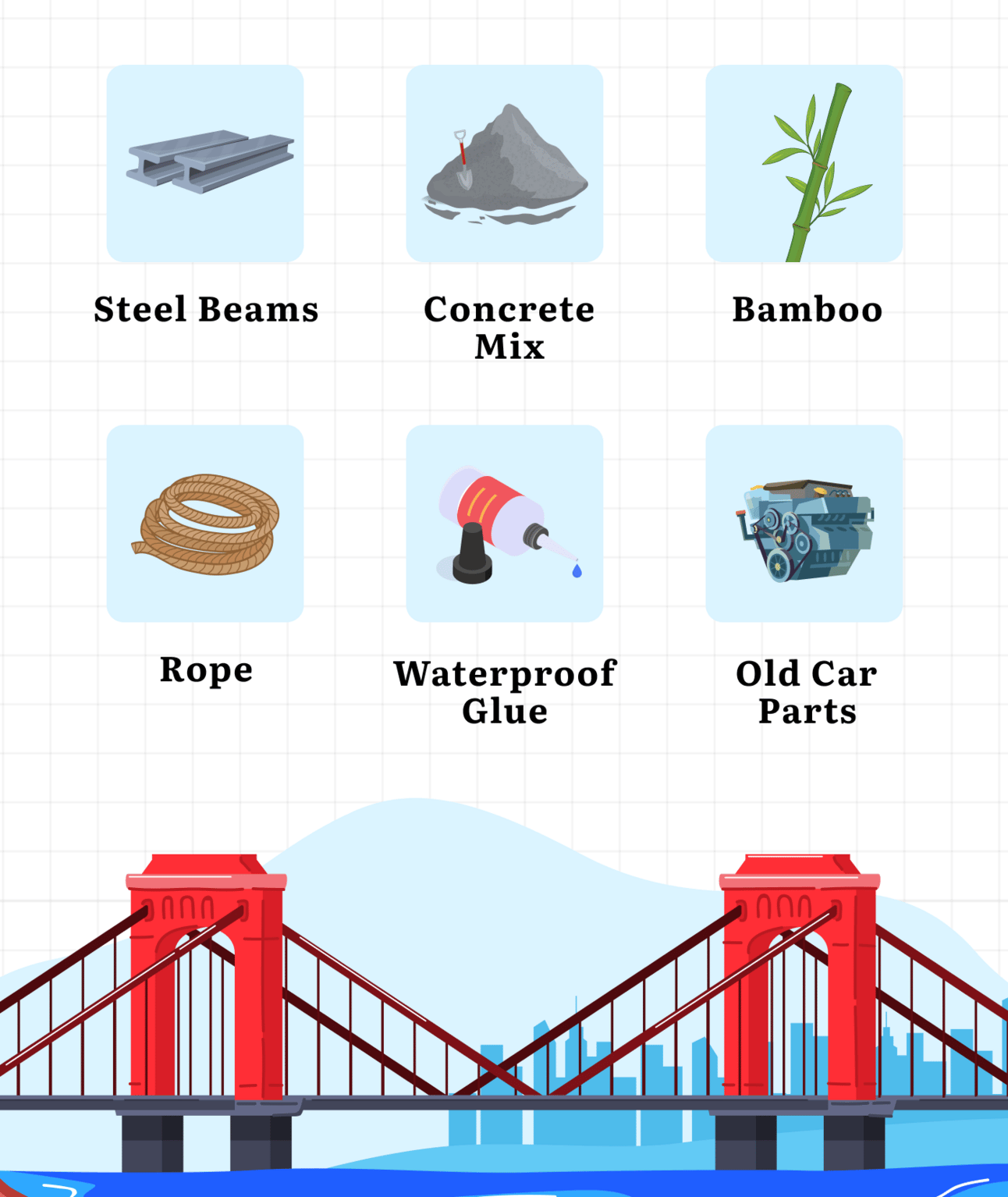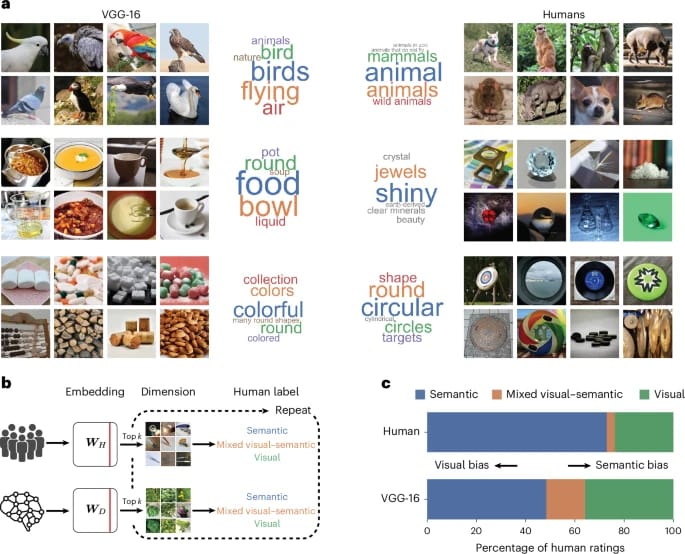- Engineer's Espresso
- Posts
- human v. island
human v. island
You need to build a bridge to escape, but..
Happy Tuesday, folks!
Welcome to This Week in Engineering
The winner is… a few of you 👀

Want to get featured in the next edition?
Then answer this right, and get a limited-edition sticker from us!!

Your task: You're stuck on an island. You need to build a bridge to escape, but you only get 3 out of the following 6 materials. Which do you choose?

Rules:
Pick only 3 materials.
Bridge must support a motorbike and one human.
It’s monsoon season. Slippery surfaces.
Bonus Twist:
If any one of your chosen materials fails, you're swimming back.
Drop your 3 picks and why you chose them.

⦁ China's Ports Just Fired Truck Drivers
Chinese ports are swapping human truckers for driverless cargo vehicles (DCVs) that work 24/7 without coffee breaks.. Seriously? Espresso is a must 😢
But on a serious note, these vehicles use AI to navigate complex port layouts, avoid obstacles, and coordinate with cranes while handling containers faster than humans (who get distracted).
Labor costs are exploding, trade volume is booming, and robots don't get road rage.
The dock workers' union is probably having some interesting meetings right now 👀
⦁ AI vs. Humans: Spot the Difference (Literally)
Turns out, humans and AI don’t see eye to eye.
A new study shows that while we humans recognize objects by meaning, like “that’s a chair because I sit on it,” AI is more like “it has four legs and is brown; it must be furniture… or maybe a dog.”
Researchers gave both humans and AI a task: pick the odd one out from a set of images. Humans used brainpower and context. AI used shape, color, and their imagination..
AI got tripped up when the odd one wasn’t visually odd, just conceptually odd. Like when one of the images was a toaster in a bunch of kitchen knives, AI was confused, but humans weren’t.
Bottom line: AI can recognize stuff, but it doesn’t get stuff the way we do. Yet.
Moral of the story: don’t let your AI decorate your house or babysit your kid’s toy box.
⦁ AI that learns like a human on the job (contrary to the above lol)
Most factory inspection systems are a pain. You have to pause the line, feed them labeled data, simulate fake defects, and basically babysit them.
VisionStream ditched the usual AI training pain: it watches your actual production line and learns in real time.
It doesn’t have a setup and never shutdowns.
Just plug it in, and it starts figuring things out as the work happens.
It flags defects within seconds. Even subtle stuff.
Even the kind of mistakes you’d usually only notice after shipping.
Scarily, it works with your existing cameras.
So… IT doesn't have to rebuild the plant.
Would you trust it?

Ever walked past a construction site and thought "great, another concrete monster destroying the planet"?
Same.
I went down a spiral to see if anything was new here (you know to see if I could make some more $$)
And I found this…
A building filled with plants jutting out of it. Cool? Meh
Then I came across a headline which said "living building materials."
My brain immediately went into full sci-fi horror mode. Buildings that breathe? Walls that grow?
But then I actually read the thing and... holy sh!t.
Researchers at ETH Zurich basically figured out how to make building materials that actively pull CO₂ out of the air and get stronger while doing it.
Not in some theoretical "maybe in 50 years" way. There are structures sitting in Venice and Milan eating carbon dioxide as we speak.
What they actually built:
Note: I'm still wrapping my head around this.
They took cyanobacteria: those blue green slimy things you see in ponds that have been around for 3.5 billion years and figured out how to embed them inside 3D printable hydrogel. Basically, a jelly-like material that you can shape however you want.
The bacteria do what they've always done: photosynthesis.
They take CO₂ from the air, add some sunlight and water, and make energy.
Except now, instead of floating around in some random pond, they're doing this inside your wall.
So why not plants?
These particular bacteria do more than just absorb carbon like plants do.
They also change the chemistry around them in a way that creates solid minerals. Limestone type stuff.
What do I mean?
The CO₂ gets locked up in two ways, some becomes organic matter, some becomes actual rock.
The rock? It makes the building material stronger.
So you've got walls that are eating pollution and getting more structurally sound over time.
Sounds cool. Have numbers to back it up?
You bet.
They tested one structure for 400 days straight. Not hours. Days.
The thing just kept pulling CO₂ out of the air the entire time.
Their 3 meter demo at the Venice Architecture Biennale absorbs 18 kg of CO₂ per year. That’s the same as a 20 year old pine tree, except this tree is also load bearing and doesn't need soil.
The part that blew my mind:
How they solved the "keeping bacteria alive" problem.
You can't just throw some microorganisms into concrete and hope for the best.
They designed the hydrogel specifically to transport light, CO₂, water, and nutrients throughout the material.
The bacteria can spread evenly but can't escape. It's like building a perfect apartment complex for microscopic tenants.
Then they used 3D printing to optimize the geometry: increasing surface area, making sure light can penetrate deep into the structure, and creating pathways for nutrients to flow naturally through capillary action.
They used the principles of physics in design rather than external pumps (a fresh change)!
We've been approaching climate change like we need to invent entirely new solutions.
Massive carbon capture facilities that look like something from a dystopian movie.
Complex machinery that requires tons of energy to run.
Meanwhile, these microscopic things have been perfecting carbon capture since before oxygen existed in our atmosphere.
They've had 3.5 billion years to get really, really good at this job.
Think about it: what if every new building were required to have living facades?
What if renovation projects included upgrading to carbon eating materials?

Manufacturing Engineer: Schneider Electric Global
Part-time process ninja, full-time chaos tamer. Turning clunky production lines into smooth-operating symphonies.Engineer II, Product Analysis: Abbott
Biomedical device detective. Digging into returned implants, sleuthing root causes, and mentoring labs to make life-saving tech bulletproof.Senior Reservoir Engineer: Gulfport Energy Corporation
Oilfield fortune-teller. Predicting flow, maximizing value, and squeezing rocks for ROI.
Want to list your job with us?
Hit reply and we’ll get it to over 19k engineers : )

Reach 19k+ engineers from North America, mostly from ENR500 companies, in a highly engaged and contextually relevant environment.
Perfect for targeting a specific audience that's actively involved in engineering, tech, and construction.
Why Advertise with Us?
Targeted Exposure: Reach professionals with specific interests in engineering fields.
Engaged Audience: The content we provide keeps the audience deeply engaged and connected.
Contextually Relevant: Your ad will be placed where it matters the most.
Let’s chat about how we can help you reach the right people!

Reply